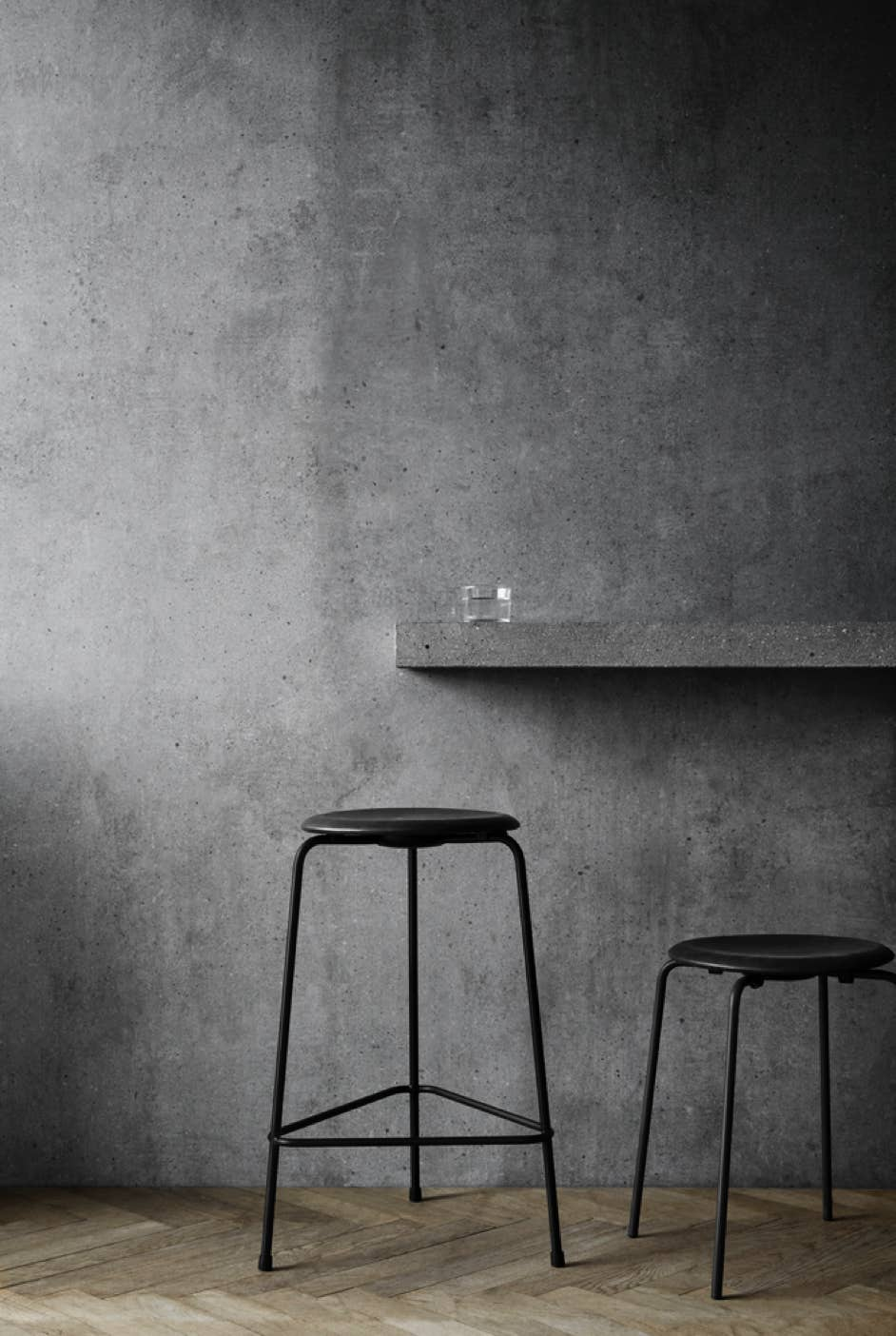
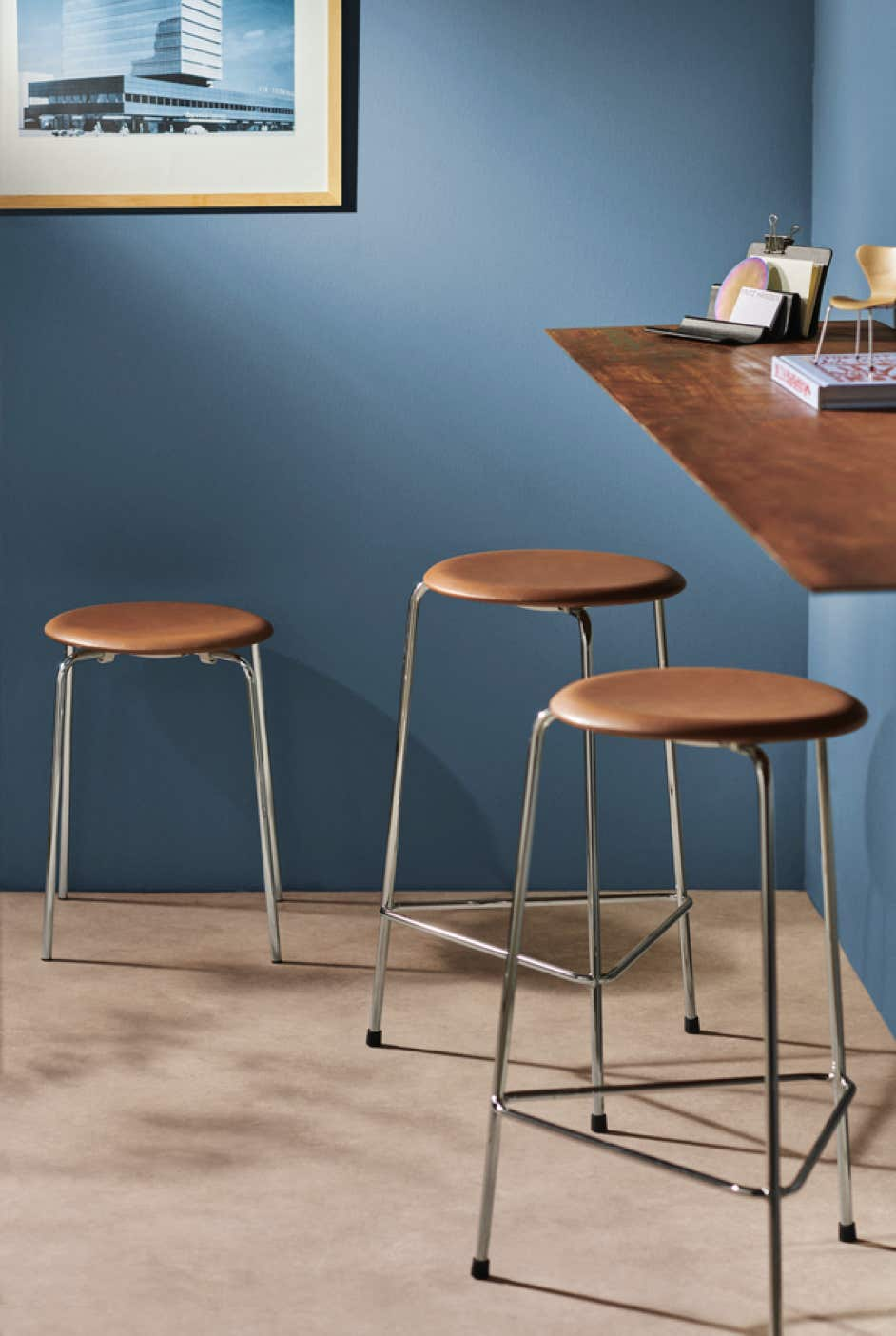
The Dot stool went into production in the 1950s to accompany the Ant chair designed by Arne Jacobsen in 1952. Jacobsen spent a great deal of time in Fritz Hansen's manufacturing workshops, testing, improving and finalising the construction technique for his famous chair.
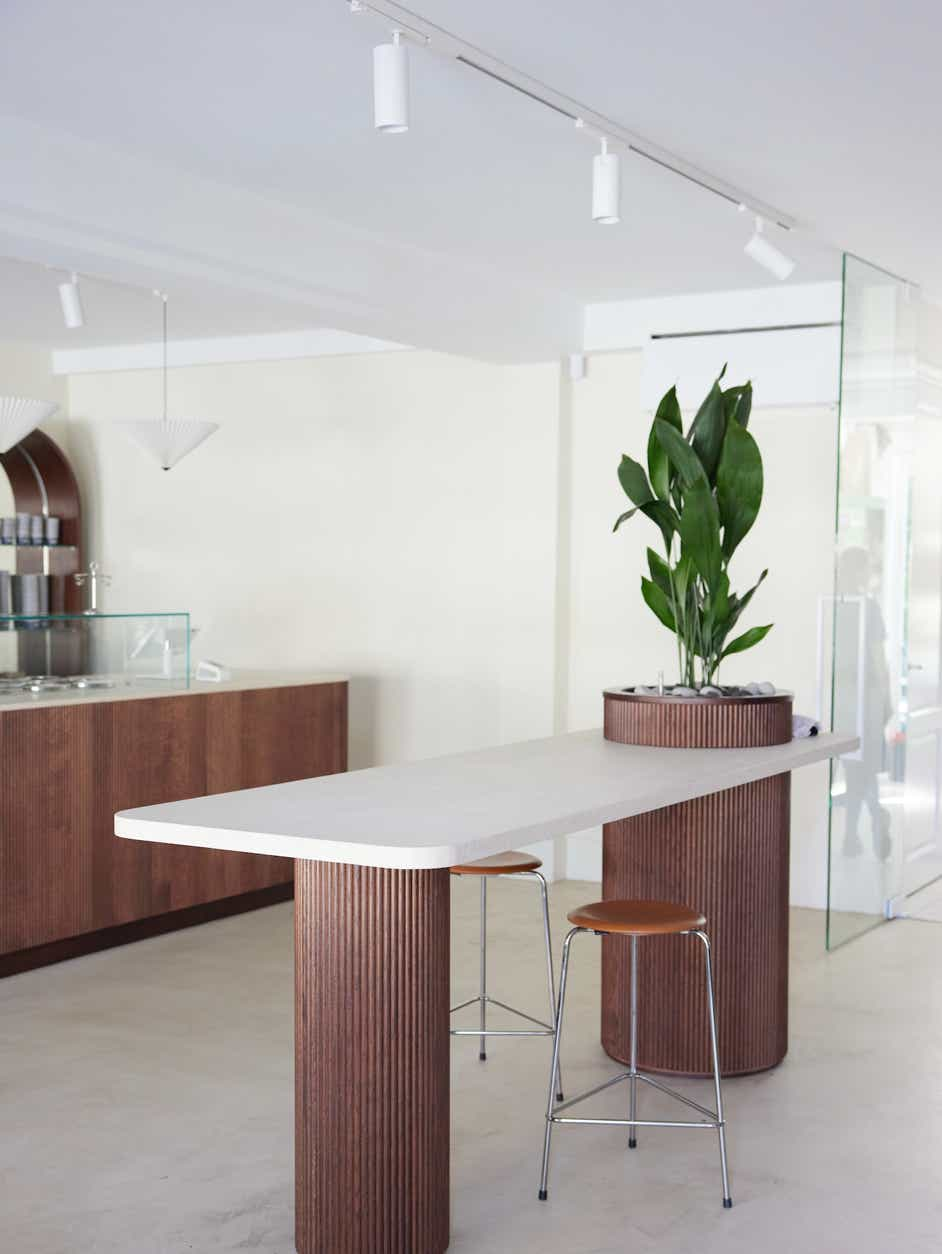
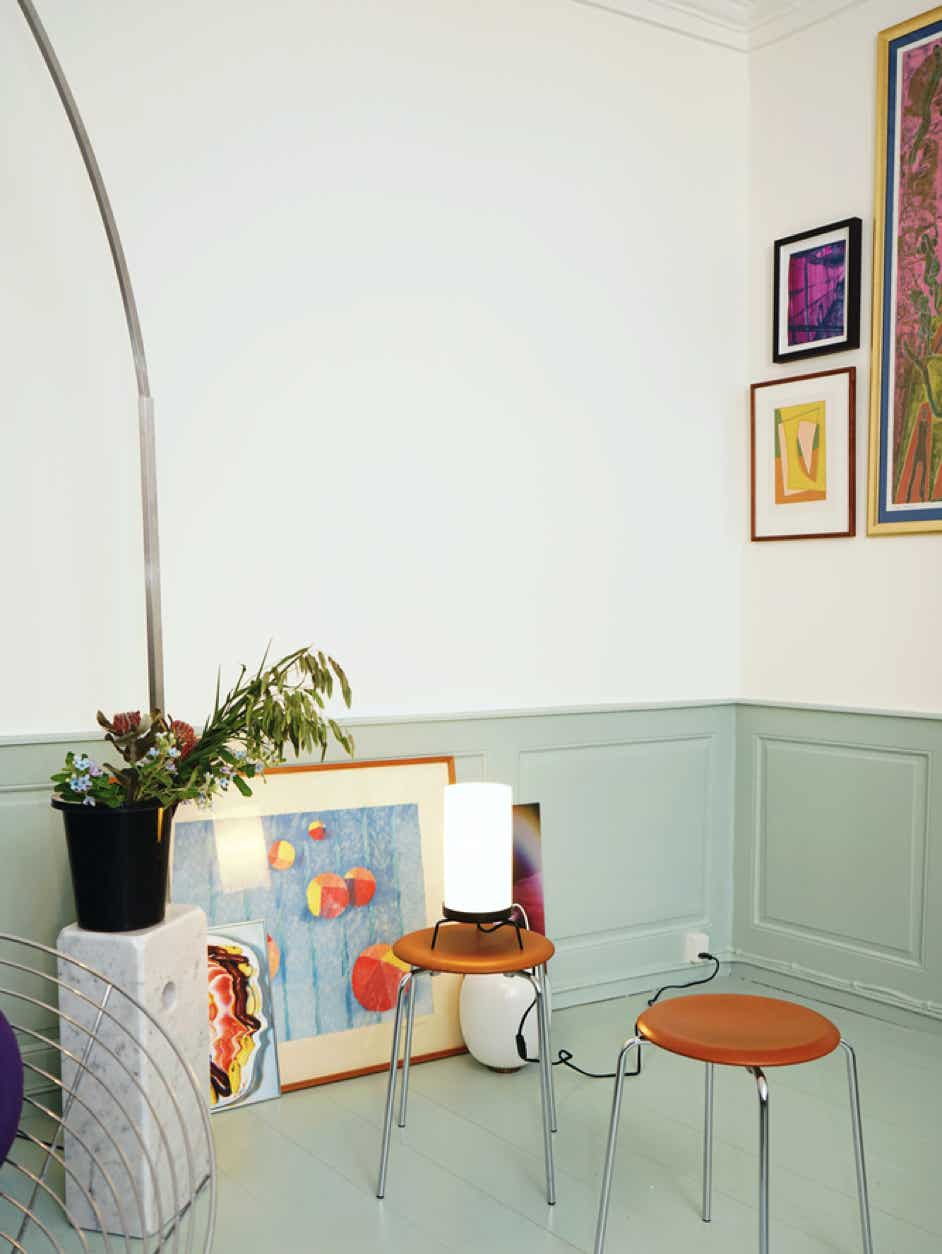
The stool was first presented in a three-legged plywood version, like the Ant. In 1970, the Dot stool was updated to its current four-leg version.
The core is moulded pressed beech plywood. It can be upholstered in premium leather made from offcuts from the manufacture of the Swan and Egg armchairs.
Lightweight and stackable, it is the perfect complement to the Fourmi, Seven and Grand Prix collections.
Dimensions Base steel tubes Ø14 mm. Height 44 or 65 cm – Seat Ø34 cm
Warranty Fritz Hansen offer up to 20 years limited warranty if the products are registered online at fritzhansen.com/my-fh
Black ash / chrome
Walnut / chrome
Intense black leather / matt black
Wild walnut leather / chrome
Black ash / chrome
Walnut / chrome
Intense black leather / matt black
Wild walnut leather / chrome
Black ash / chrome
Walnut / chrome
Intense black leather / matt black
Wild walnut leather / chrome
Black ash / chrome
Walnut / chrome
Intense black leather / matt black
Wild walnut leather / chrome
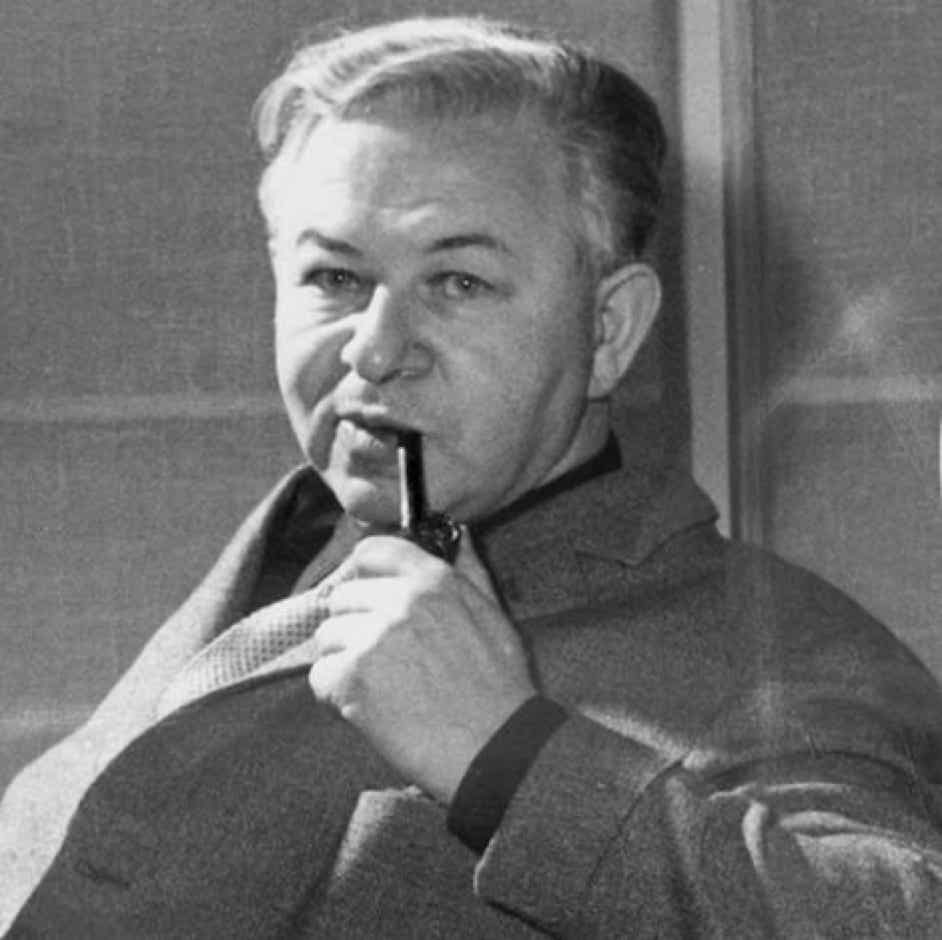
Arne Jacobsen was born on February 11, 1902 in Copenhagen. His father, Johan Jacobsen, is a wholesale trader in safety pins and snap fasteners. His mother, Pouline Jacobsen, a bank clerk, paints floral motifs in her spare time. The family lived in a typical Victorian style home. As a contrast to his parents’ overly decorated taste, Arne paints his room in white.
Background & school relations
He met the Lassen brothers at Nærum Boarding School: later, Flemming Lassen was to become his partner in a series of architectural projects. Arne Jacobsen is a restless pupil, always up to pranks, with a self-deprecating humour. Already as a child, he showed an extraordinary talent for drawing and depicting nature through scrupulous studies. He wants to be painter, but his father felt that architect was a more sensible choice.
The Pleasant and the necessary trips abroad
Jacobsen’s travelling begin already in his twenties, when he went to sea to New York. Then followed an apprenticeship as a bricklayer in Germany and a series of study and drawing excursions to Italy. Jacobsen produced some of his finest watercolours during this period, capturing atmospheres and shapes accurately and carefully. From the beginning of his career, Jacobsen turned his gaze abroad, without abandoning Danish traditions.
Arne Jacobsen behind the design
Jacobsen production reflects his personality: an insistent, perfectionist modernist, to whom no detail was trivial, although the main picture was basically black/white and unambiguous. On the other hand, the nature-loving botanist and jovial family man: like him, his work is precise and warm, Danish and universal, modern and timeless.